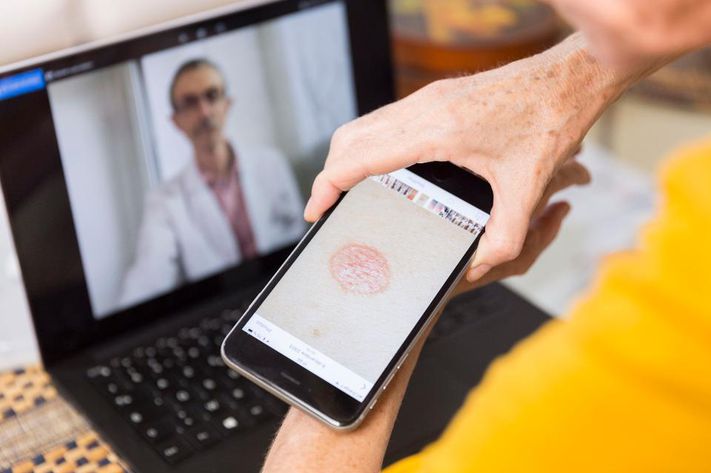

“The numbers don’t lie,” is a famous old adage and quite appropriate with regard to the rapid rise and deployment of telehealth solutions in the medical community. It may have taken a global pandemic for society to recognize and investigate the rewards of its adoption, but statistics reveal that telehealth’s moment has indeed come. And it certainly seems like it’s here to stay.
How did we come so far, so fast? By undertaking forward-thinking policies and bold action, the health care industry nimbly and quickly adopted this technology to mitigate the immediate threat of COVID-19’s lethal contagiousness.
As it pertains to effectiveness, the federal government’s overwhelming response to shore up commerce, industry, and unforeseen unemployment levels has been met with mixed reviews. But the designated programs specific to the healthcare industry have been an undeniable success. Thanks to a sudden and massive infusion of funding and support for telehealth medicine, initiated by federal and state governments, the health care industry is witnessing a historic sea-change in its processes, procedures, and practices. The widespread, rapid adoption of telehealth solutions is the prime example.
Beyond the impact of funding, now in the hundreds of millions of dollars, the utilization of telehealth also benefited from additional measures which simultaneously boosted its appeal for trial and adoption. For the first time, health care providers were permitted to use telehealth to treat Medicare patients, opening the door for insurance companies and state governments to follow suit.
Subsequently, many of the nation’s largest private insurance providers then took it a step further—waiving copays for patient consultations via telehealth. For both the insured and uninsured, the elimination of out-of-pocket costs is likely to increase consumer trial and adoption of virtual physician visits. The bold and swift decisions to relax certain restrictions and requirements within the traditional health care model has created fertile ground for telehealth’s trial and adoption.
The use of telehealth as a practical solution has been available for some time, but its adoption by consumers faced difficulty, as many perceived virtual visits would not measure up to the value of in-person doctor appointments. But recent research and surveys on telehealth’s usage reveal this barrier may be crumbling. In April, Sage Growth Partner (SGP) and Black Book Market Research collaborated on a survey revealing that, prior to COVID-19, only a quarter of respondents had used telehealth. But amidst the backdrop of our current pandemic, nearly 60% of those surveyed say they are now likely to consider telehealth in addressing their personal health care needs. Additionally, other studies have concluded that after an initial trial of telehealth, a majority of consumers expressed high levels of satisfaction with their experience—and a strong likelihood of follow-up use.
Yet only viewing the benefits of telehealth through the narrow lens of a physician-patient consultation is to overlook its full value proposition across the health care industry as a whole. What are some other examples of how telehealth is changing the health care landscape for the better? Here are a few ways in which its adoption and use are improving our models of caregiving:
Protecting our Collective Health
Amidst the COVID-19 pandemic, an obvious benefit is the option to seek care remotely while maintaining isolation through the practice of social distancing. There are no crowded waiting rooms or hospital hallways to deal with, thereby lessening the risk of exposure and infection to patients and caregivers alike.
Meeting the Caregiver Demand
In some areas of the U.S., a steep demand for health advisors has spiked, due to postponement of elective surgeries and the need for ongoing treatment of patients with chronic health care conditions. Pack Health, Birmingham, Al. chronic care coaching provider utilizes certified Health Advisors to help patients get access to care options while helping them develop self-management skills to gradually improve their conditions. With a surge of over 50,000 new patients, the company rapidly transformed its onboard training program to a telehealth platform to meet the demand for new hires. In doing so, Pack Health was able to scale up staffing much faster and cheaper than ever before.
Impact on Rural Health Care
According to the consultants at Guidehouse, one in four rural hospitals are deemed high-risk for closing—and this was reported before the pandemic. Through the use of telehealth platforms, a large portion of the rural United States can now receive access to clinical care services and at-home monitoring services. In effect, telehealth can become a new tool to help alleviate rural America’s serious deficit of accessing critical care.
Impact on Mental Health Care
The rise in telehealth adoption is also having a positive effect for patients who require access to mental health services. Even before the pandemic, many people with various mental health needs chose not to seek treatment due to perceived social stigmas. Using telehealth as a solution, they can now obtain access to providers, care, therapy, and treatment in the privacy of their homes. Likewise, those patients already under the care of mental health professionals are able to keep routine appointments, in spite of COVID-19’s disruption.
As for telehealth’s future, it is certain to benefit in multiple ways from its current trial by fire. Perhaps there is no better proving ground for assessing its total value proposition than during a global health crisis that shows no sign of relenting. Being at the right place at the right time can be an invaluable proving ground and the future of the telehealth industry appears to be positioned for staggering growth. In April, Global Market Insights, market research, and consulting company released a report predicting the telemedicine market will reach $175.5B by the year 2026.
Furthermore, healthcare providers need to think of telehealth as only one component of comprehensive care. Patients need to have several different touchpoints throughout the healthcare continuum to ensure the best quality of care. Examples of these touchpoints include advanced biometric wearables, real-time data collection, and advanced analytics to provide actionable data for patients and care teams.
As technology continues to drive the rapid pace of improvements in digitalization, platforms, high-speed broadband access, and mobile devices, the widespread adoption of telehealth and telemedicine solutions will become even more commonplace. As a result, the ever-increasing capacity to improve our traditional health care delivery models may indeed be forever changed for the better.
About Ernie Ianace
Ernie Ianace is the Executive Vice President of Sales and Marketing at VitalTech® Affiliates, LLC. Based in Plano, TX, VitalTech is a rapidly growing provider of fully integrated digital health solutions and smart biomedical wearables that provide real-time monitoring for patient wellness and safety. The company’s connected care platform, VitalCare®, enables health systems, skilled nursing facilities, home health providers, physicians, and senior living facilities to streamline workflows while improving health outcomes, increasing patient safety, and lowering the cost of care.
